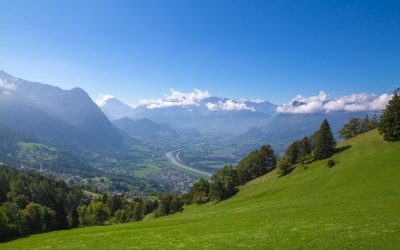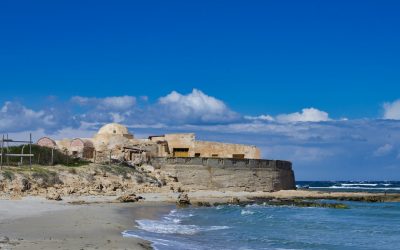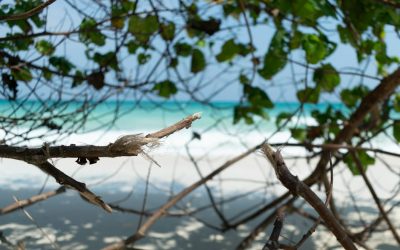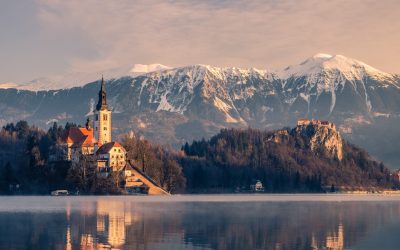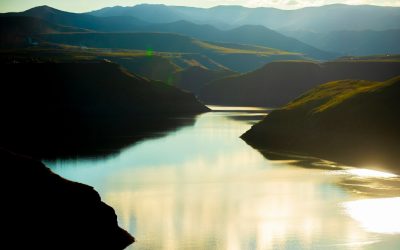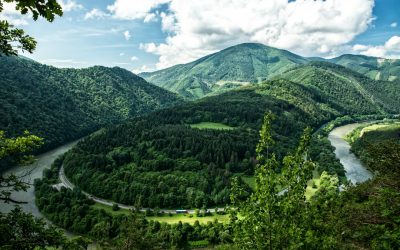Explore the World Through Geography, Natural Resources & Daily History
Clear, reliable and engaging guides that help you understand our planet — from UK geography education to global natural resources and On This Day history events.
Explore, discover, and learn about the wonders of our world! At Earth Site, we’re passionate about bringing geography, history, and science to life for curious minds of all ages. Whether you’re delving into historical events, uncovering the mysteries of the natural world, or seeking interactive resources, you’re in the right place.
Here, you can uncover the stories behind historical events, explore the natural wonders of our planet, and gain valuable insights into how the Earth’s systems shape our daily lives. From the towering peaks of mountain ranges to the far-reaching impacts of human innovation, we aim to make every topic both engaging and informative.
Start your journey of discovery with us today, and let’s make learning an adventure!
What We Cover
Earth Site brings together engaging and accessible educational content designed to help you understand the world, its history, and its natural systems.
🌍 Geography Education (UK & Worldwide)
We publish clear, easy-to-understand geography resources for students, teachers and curious learners. Our guides support geography education in the UK and cover physical geography, climate, ecosystems, population, and global development.
⛏️ Natural Resources & Environmental Geography
Explore detailed country profiles covering natural resources, mining, energy, geology and global environmental challenges. We show how nations manage minerals, water, land and ecosystems, and why these resources matter.
📅 On This Day in History
Every day has a story. Our On This Day history series features major events, anniversaries, traditions, and cultural milestones from around the world — with timelines, context, and fun facts.
TIMELINE
Unleashing the Power of Vanadium: The British Element Revolutionizing Energy Storage
Vanadium, a chemical element with the symbol V and atomic number 23, has a rich history dating back to its discovery in the early 19th century. It was first isolated by the Swedish chemist Nils Gabriel Sefström in 1830, who named it after Vanadis, the Scandinavian goddess of beauty and fertility. Since then, vanadium has found numerous applications in various industries, but its potential in energy storage has recently caught the attention of scientists and engineers worldwide. Energy storage is a critical component of modern society, as it allows for the efficient use and distribution of electricity. Vanadium’s unique properties make it an ideal candidate for energy storage systems, particularly in the form of vanadium redox flow batteries (VRFBs). These batteries have the potential to revolutionize the energy industry by providing a reliable and scalable solution for storing renewable energy. Summary Vanadium is a British element with revolutionary energy storage properties. Vanadium’s unique properties make it an ideal material for energy storage in batteries. Vanadium redox flow batteries are a promising technology for the future of energy storage. Vanadium can play a key role in addressing climate change through its use in renewable energy. Vanadium has significant economic potential for the British industry, but mining and recycling present challenges. The Science behind Vanadium: Understanding its Unique Properties Vanadium is a transition metal with a silvery-gray appearance. It has a high melting point and is known for its excellent strength and corrosion resistance. These properties make it suitable for various industrial applications, such as in the production of steel and alloys. In terms of energy storage, vanadium’s most significant property...
Exploring the Vibrant Culture and Scenic Beauty of South Africa: A Journey Through the Rainbow Nation
South Africa, known as the Rainbow Nation, is a country located at the southernmost tip of the African continent. It is a land of rich history and diverse cultures, with a population that is made up of various ethnic groups and languages. The nickname “Rainbow Nation” was coined by Archbishop Desmond Tutu to describe the country’s multiculturalism and diversity. South Africa has a complex history, marked by colonization, apartheid, and the struggle for freedom and equality. The country has overcome many challenges and has emerged as a vibrant and diverse nation. Today, South Africa is known for its natural beauty, wildlife, vibrant cities, and rich cultural heritage. Summary South Africa is known as the Rainbow Nation due to its diverse population and cultures. South Africa has a rich cultural heritage, including traditional music, dance, and art. The landscapes of South Africa are breathtaking, from the beaches of the coast to the mountains and deserts inland. A safari adventure in South Africa offers the chance to see the Big Five and other wildlife up close. Cape Town, Johannesburg, and Durban are vibrant cities with their own unique attractions and cultures. Discovering the Rich Cultural Heritage of South Africa South Africa is home to a wide range of cultures and traditions, each with its own unique customs and practices. From the Zulu people in the east to the Xhosa people in the south, there are countless opportunities to immerse yourself in the local culture. One way to experience South Africa’s cultural heritage is by visiting a Zulu village. Here, you can learn about their traditional way of life, witness traditional ceremonies,...
Discovering the Hidden Gems of Liechtenstein: A Journey Through Europe’s Smallest Country
Nestled between Switzerland and Austria, Liechtenstein is a small but captivating country that often goes unnoticed by travelers. With a population of just over 38,000 people, Liechtenstein is one of the smallest countries in the world, but it is also one of the most charming. Despite its size, Liechtenstein offers a wealth of natural beauty, rich cultural heritage, and a range of activities and experiences that make it a hidden gem in Europe. Summary Liechtenstein is a hidden gem in Europe, often overlooked by tourists. The country boasts stunning natural beauty, with opportunities for hiking and skiing. Liechtenstein’s rich cultural heritage is on display in its museums and art galleries. The historic towns and villages of Liechtenstein are charming and picturesque. Foodies will love the local cuisine and wine tasting experiences in Liechtenstein. The Natural Beauty of Liechtenstein: Exploring the Great Outdoors Liechtenstein is blessed with stunning landscapes that are sure to take your breath away. From the majestic peaks of the Alps to the picturesque valleys and crystal-clear lakes, there is no shortage of natural beauty to explore. Hiking is a popular activity in Liechtenstein, with numerous trails that cater to all levels of fitness and experience. Whether you’re a seasoned hiker or just looking for a leisurely stroll, you’ll find plenty of options to suit your needs. Cycling is another great way to experience the natural beauty of Liechtenstein. The country boasts a well-developed network of cycling paths that wind through its scenic countryside. You can rent a bike and explore at your own pace, taking in the stunning views as you pedal along. In the winter...
Exploring the Rich Culture and History of Somalia: A Journey Through the Horn of Africa
Somalia, located in the Horn of Africa, is a country with a rich and diverse culture that is often overlooked. It is a land of ancient history, vibrant traditions, and resilient people. Learning about Somalia and its culture is important as it allows us to broaden our understanding of the world and appreciate the beauty and uniqueness of different societies. Summary Somalia has a rich history and culture that is often overlooked in the media. The country has a complex political landscape, with various factions vying for power. Somalia has a long history of trade and commerce, dating back to ancient times. Islam has had a profound impact on Somali culture and society, shaping everything from daily life to politics. Somali women have played a crucial role in society and politics, despite facing significant challenges and discrimination. The Geographical and Political Landscape of Somalia Somalia is blessed with a diverse geography that includes stunning coastlines, arid deserts, fertile plains, and rugged mountains. The country experiences a tropical monsoon climate, with two distinct seasons – the dry season and the rainy season. This geographical diversity has shaped the culture and way of life of the Somali people. Politically, Somalia has faced numerous challenges throughout its history. It gained independence from Italy and Britain in 1960 but has since experienced periods of political instability and civil war. Currently, Somalia operates under a federal parliamentary republic system, with a president as the head of state and a prime minister as the head of government. The Ancient and Medieval History of Somalia Somalia has a rich ancient and medieval history that dates back...
Exploring the Rich History and Culture of Libya: A Journey Through the Land of the Berbers
Located in North Africa, Libya is a country known for its diverse landscapes, rich history, and vibrant culture. It is bordered by the Mediterranean Sea to the north, Egypt to the east, Sudan to the southeast, Chad and Niger to the south, and Algeria and Tunisia to the west. With a population of over 6 million people, Libya is home to a mix of ethnic groups, including Arabs, Berbers, Tuaregs, and other minority groups. Libya’s history and culture are of great importance not only to its own people but also to the world. The country has been inhabited since prehistoric times and has been influenced by various civilizations throughout its history. From the indigenous Berber people to the ancient Phoenicians, Greeks, and Romans, as well as Islamic influences and more recent colonial rule, Libya’s heritage is a testament to its rich past. Summary Libya is a diverse country with a rich heritage. The Berbers are the indigenous people of Libya. Libya has a history of ancient civilizations, including the Phoenicians, Greeks, and Romans. Libya has a strong Islamic heritage, with many mosques, madrasas, and tombs. Libya has experienced colonial rule under Italy and Britain, as well as a revolution and civil war. The Berbers: The Indigenous People of Libya The Berbers are the indigenous people of Libya and have inhabited the region for thousands of years. They have their own distinct culture, language, and traditions that have greatly influenced Libyan society. The Berber language, known as Tamazight, is still spoken by a significant portion of the population. The Berbers have a rich oral tradition that includes storytelling, poetry, and...
Discovering the Hidden Gems of the Solomon Islands: A Journey Through the Pacific’s Pristine Paradise
The Solomon Islands, located in the South Pacific, is a hidden gem that should be on every traveler’s bucket list. With its pristine beaches, lush rainforests, and vibrant culture, this archipelago offers a unique and enchanting experience for those seeking an off-the-beaten-path adventure. The Solomon Islands is made up of over 900 islands, each with its own distinct beauty and charm. From the main island of Guadalcanal, where you can explore historical sites from World War II, to the remote and untouched islands of the Western Province, there is something for everyone in this tropical paradise. Summary The Solomon Islands offer an enchanting destination with a rich history and culture. The islands are home to a diverse range of natural wonders, including unique biodiversity and world-class diving and snorkelling opportunities. Visitors can escape to idyllic beaches and islands for the perfect getaway, or embark on adventure activities such as hiking and kayaking. Savour the local cuisine and celebrate the islands’ rich heritage at festivals and events. Sustainable tourism practices support local communities and the environment, making for a memorable and responsible trip. History and Culture: A Glimpse into the Past The Solomon Islands has a rich cultural heritage that dates back thousands of years. The indigenous people of the islands have a deep connection to their land and traditions, which are still observed today. Visitors to the Solomon Islands can immerse themselves in the local culture by visiting traditional villages and witnessing traditional ceremonies and dances. One of the most significant historical sites in the Solomon Islands is Honiara, the capital city located on Guadalcanal. Here, you can visit...
Exploring the Rich Culture and History of Liberia: A Journey to West Africa
Liberia, located on the west coast of Africa, is a country with a rich history and vibrant culture. It is bordered by Sierra Leone to the northwest, Guinea to the north, and Ivory Coast to the east. With a population of over 4 million people, Liberia is known for its diverse ethnic groups, including the Kpelle, Bassa, and Gio. Liberia’s history is unique among African nations. It was founded in the early 19th century by freed American slaves who returned to Africa. These settlers established a colony and named it Liberia, which means “land of the free” in Latin. The country gained independence in 1847 and has since experienced periods of political instability and civil war. However, Liberia has made significant progress in recent years towards peace and development. Liberia is a unique destination for travelers due to its blend of African and American influences. The country’s history as a settlement for freed slaves has resulted in a culture that combines elements of both African and American traditions. This fusion can be seen in Liberia’s music, dance, cuisine, and art. Additionally, Liberia’s natural beauty, with its stunning landscapes and diverse wildlife, makes it an ideal destination for nature lovers. Summary Liberia is a unique West African nation with a rich history and culture. From colonization to independence, Liberia’s history is complex and fascinating. Liberia’s culture is a blend of African and American influences, creating a unique identity. Traditional music and dance in Liberia are a celebration of life and community. Liberia’s art and craft reflect the nation’s heritage and are a testament to its creativity. The History of Liberia:...
Discovering the Hidden Gems of Slovenia: A Journey Through the Picturesque Landscapes and Rich Culture
Slovenia may be a small country, but it is packed with hidden gems waiting to be discovered. Nestled between Italy, Austria, Hungary, and Croatia, Slovenia offers a diverse range of landscapes, from majestic mountains to crystal-clear lakes and lush forests. While popular destinations like Lake Bled and Ljubljana are well-known, there are many lesser-known attractions and experiences that showcase the true beauty and culture of this hidden gem. Summary Slovenia is a hidden gem with natural wonders, rich history and culture, charming towns and villages, delicious cuisine and wine, artistic and creative side, thriving outdoor activities, and friendly locals. Exploring Slovenia’s natural wonders includes visiting the stunning Lake Bled, the underground Postojna Cave, and the Triglav National Park. Delving into Slovenia’s rich history and culture involves exploring the medieval Ljubljana Castle, the Lipica Stud Farm, and the Skocjan Caves. Discovering Slovenia’s charming towns and villages includes visiting the coastal town of Piran, the picturesque village of Bled, and the historic town of Ptuj. Sampling Slovenia’s delicious cuisine and wine involves trying traditional dishes like potica and jota, and tasting local wines like Rebula and Teran. Exploring Slovenia’s Natural Wonders Slovenia is a nature lover’s paradise, with its stunning landscapes and outdoor activities. The country is home to the Julian Alps, which offer excellent hiking and skiing opportunities. Triglav National Park is a must-visit for outdoor enthusiasts, with its rugged peaks, glacial lakes, and picturesque valleys. The park is also home to Mount Triglav, the highest peak in Slovenia. For water sports enthusiasts, Lake Bled is a popular destination. With its emerald-green waters and a medieval castle perched on a...
Exploring the Enchanting Land of Lesotho: A Journey Through the Mountain Kingdom
Lesotho, also known as the Kingdom in the Sky, is a small landlocked country located in southern Africa. It is completely surrounded by South Africa and is known for its stunning landscapes, rich culture, and warm hospitality. Lesotho has a fascinating history, having been established as a kingdom in the 19th century and maintaining its independence throughout colonial rule. The country is home to the Basotho people, who have a unique culture and traditions that are still celebrated today. Lesotho is a truly unique travel destination for several reasons. Firstly, its geographical location makes it a haven for outdoor enthusiasts. The country is dominated by mountains, with the Maloti-Drakensberg range running through its eastern border. This makes Lesotho a paradise for hikers, with numerous trails and breathtaking views to explore. Additionally, Lesotho’s rich cultural heritage sets it apart from other destinations in the region. The Basotho people have a strong sense of identity and pride in their traditions, which can be seen in their clothing, music, dance, and art. Summary Lesotho is a small, landlocked country in southern Africa known as the Kingdom in the Sky. The natural wonders of Lesotho include stunning mountains, rivers, and valleys that offer breathtaking views and outdoor activities. The unique culture of Lesotho is rich in traditions and customs, including the famous Basotho blanket and hat. The best places to visit in Lesotho range from historical sites like Thaba-Bosiu to natural reserves like the Sehlabathebe National Park. Trekking in Lesotho is a hiker’s paradise, with trails that lead through the mountains and valleys to remote villages and stunning vistas. The Natural Wonders of...
Unleashing the Power of Titanium: Exploring the Benefits of Ti in Modern Manufacturing
Titanium is a versatile and strong metal that has become increasingly important in modern manufacturing. It is known for its exceptional strength-to-weight ratio, corrosion resistance, and biocompatibility, making it an ideal material for a wide range of applications. Titanium is widely used in industries such as aerospace, medical, automotive, and more. Its unique properties and advantages have made it a highly sought-after material in the manufacturing world. Summary Titanium is a versatile and strong metal with unique properties that make it ideal for use in manufacturing processes. The history of titanium dates back to the early 19th century, and it has since become a popular material in modern manufacturing. The advantages of using titanium include its high strength, low density, and corrosion resistance, making it a popular choice in aerospace, medical, and automotive industries. Titanium alloys combine the best of both worlds, offering even greater strength and durability than pure titanium. While there are challenges and limitations to using titanium in manufacturing, innovations such as 3D printing are opening up new opportunities for research and development in the future. The History of Titanium and Its Use in Modern Manufacturing The history of titanium dates back to the late 18th century when it was first discovered by William Gregor, an English clergyman and mineralogist. However, it wasn’t until the early 20th century that the commercial production of titanium began. The United States played a significant role in the development of titanium production during World War II when it was used for military applications. Over the years, the use of titanium in manufacturing has evolved significantly. In the early days, titanium...
Discovering Slovakia: An Unforgettable Journey Through the Heart of Europe
Nestled in the heart of Europe, Slovakia is a land of hidden gems waiting to be discovered. With its rich history, diverse culture, and stunning natural landscapes, this small country offers a unique and off-the-beaten-path experience for travelers. Located in Central Europe, Slovakia shares borders with Poland, Ukraine, Hungary, Austria, and the Czech Republic. Its strategic location has influenced its history and culture, resulting in a fascinating blend of influences from neighboring countries. Slovakia has a long and complex history, with evidence of human habitation dating back to the Paleolithic era. Throughout the centuries, the region has been ruled by various empires, including the Celts, Romans, and Habsburgs. In the 20th century, Slovakia was part of Czechoslovakia until it gained independence in 1993. This rich history is reflected in the country’s architecture, traditions, and cultural heritage. For travelers looking for something off the beaten path, Slovakia is the perfect destination. While neighboring countries like Austria and the Czech Republic attract hordes of tourists, Slovakia remains relatively undiscovered. This means that visitors can experience authentic Slovak culture and explore untouched natural landscapes without the crowds. Whether you’re interested in history, outdoor adventures, or simply immersing yourself in a new culture, Slovakia has something to offer. Summary Slovakia is a land of hidden gems, with rich cultural heritage and natural wonders waiting to be discovered. Visitors can explore castles, learn about folk traditions, and enjoy outdoor adventures like hiking and skiing. The cities of Bratislava and Kosice offer vibrant urban experiences, while the countryside is perfect for relaxation and exploration. Foodies will love Slovakian cuisine, which features hearty stews, dumplings, and...
Discovering the Charms of Lebanon: A Journey Through its Rich Culture and Scenic Beauty
Lebanon, a small country located in the Middle East, is often referred to as the “Switzerland of the Middle East” due to its stunning natural beauty and diverse cultural heritage. Nestled between the Mediterranean Sea and the mountains, Lebanon offers a unique blend of history, culture, and breathtaking landscapes that make it a must-visit destination for travelers. With a history dating back thousands of years, Lebanon has been influenced by various civilizations and empires, including the Phoenicians, Romans, Byzantines, and Ottomans. This rich history is evident in the country’s architecture, archaeological sites, and cultural traditions. Lebanon is also known for its vibrant culture, with music, dance, and art playing a significant role in the daily lives of its people. The country hosts numerous festivals and events throughout the year, showcasing its diverse cultural scene and attracting artists and performers from around the world. Summary Lebanon is a charming destination with a rich history, vibrant culture, scenic beauty, culinary delights, religious diversity, unique architecture, warm hospitality, and thriving nightlife. A walk through Lebanon’s history reveals the influence of various civilizations, including the Phoenicians, Romans, Ottomans, and French. Lebanon’s culture is expressed through music, dance, and art, with traditional forms like dabke and modern genres like Arabic pop. Lebanon’s scenic beauty includes mountains, beaches, and valleys, with highlights like the Jeita Grotto and the Cedars of God. Lebanon’s cuisine is a food lover’s paradise, with dishes like tabbouleh, hummus, and shawarma, and drinks like arak and Lebanese wine. A Walk Through the Rich History of Lebanon Lebanon’s history is a tapestry woven with the threads of ancient civilizations and empires. From...


